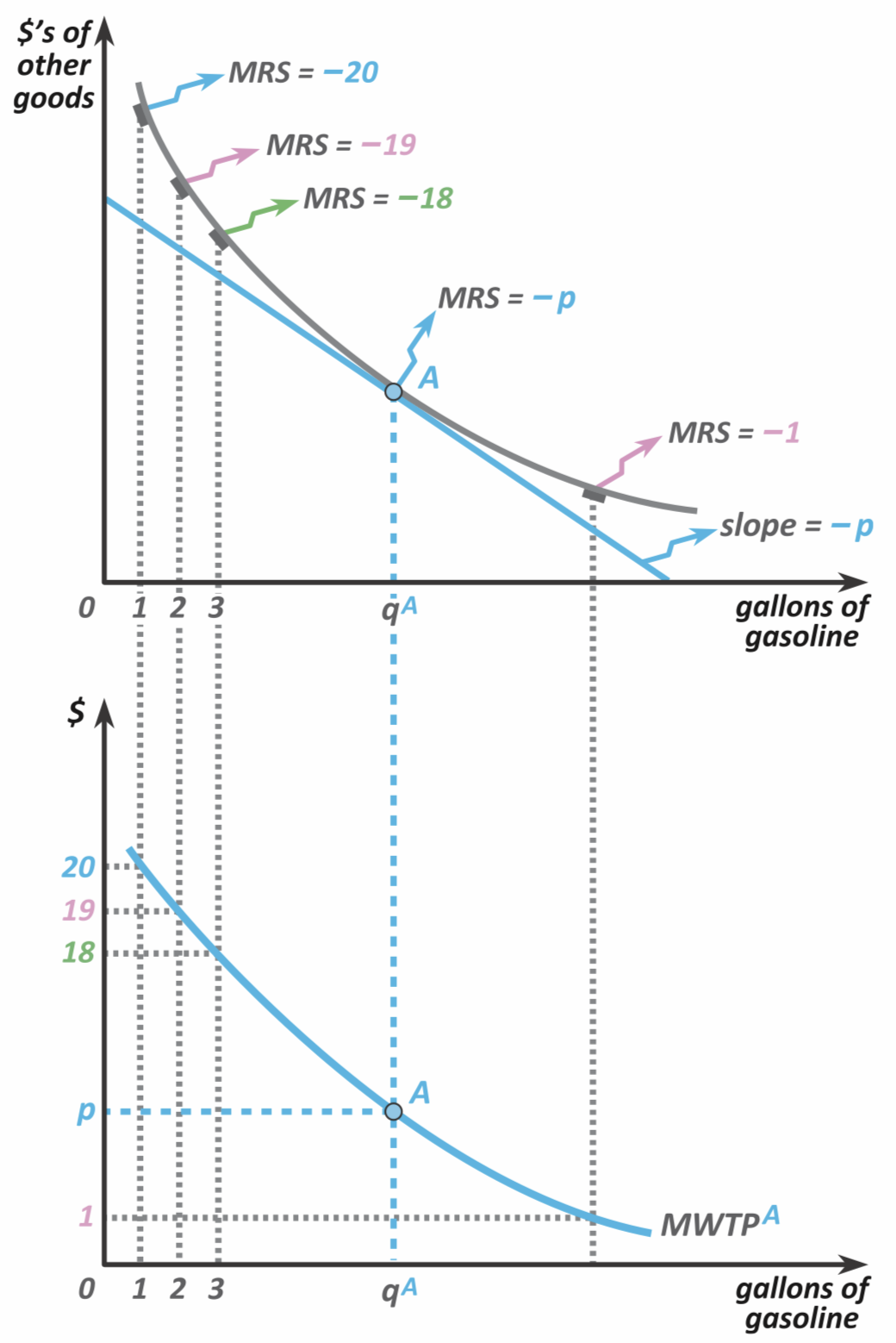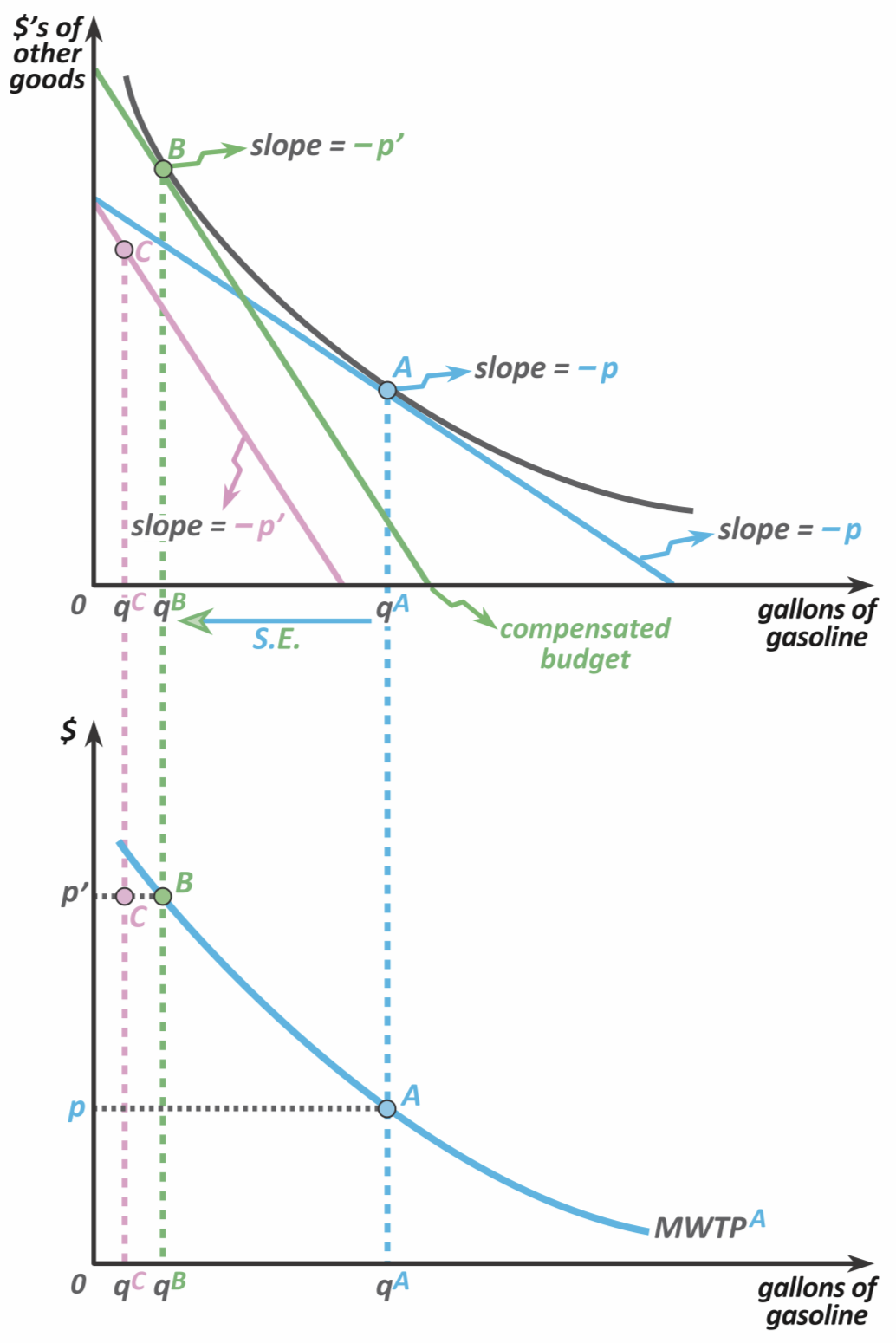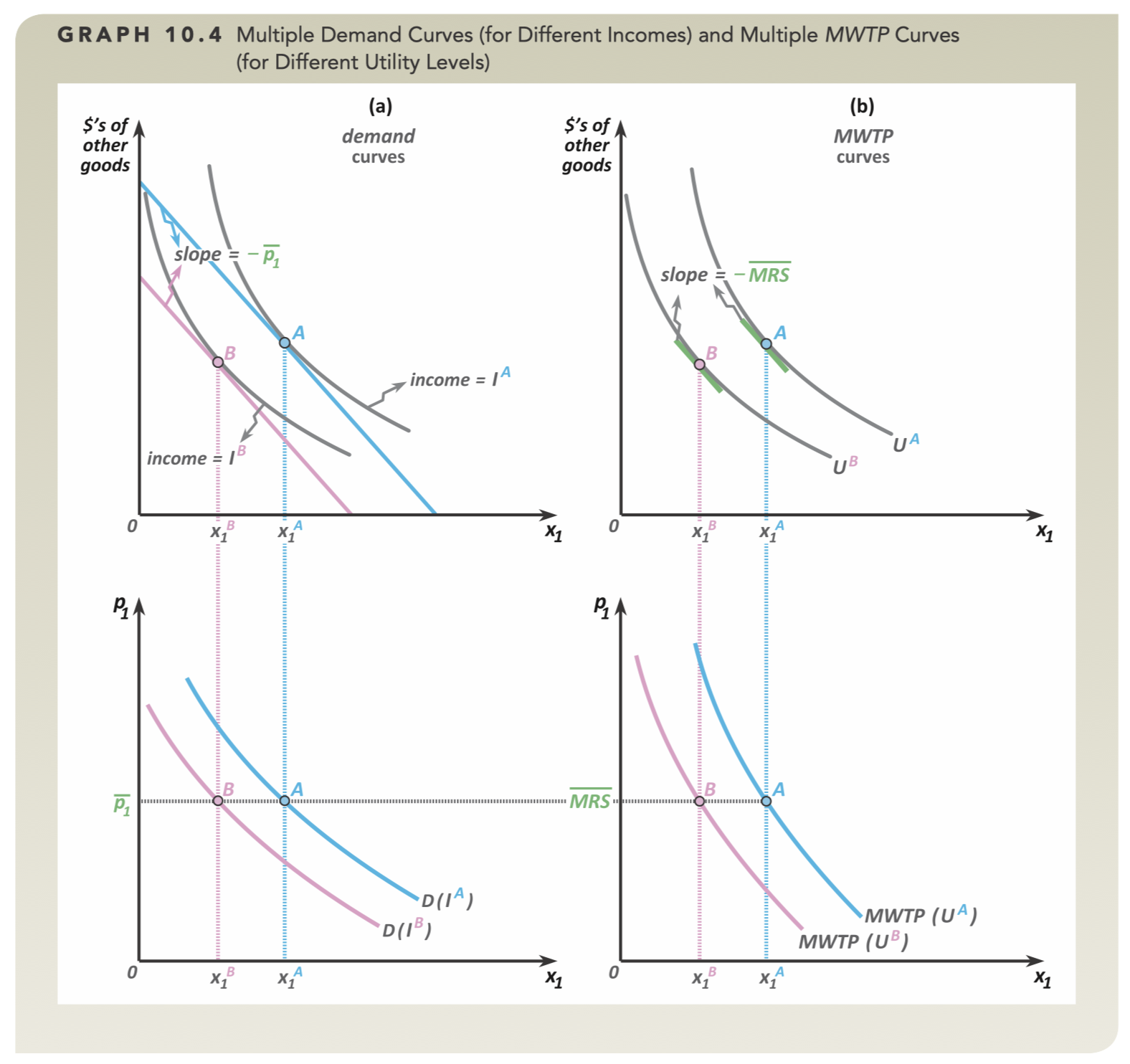Abstract
Basically, “In a vacuum, how much do you want it?”
- Think CGP Grey’s “I’d pay anything for Apple to make X.”
- Used to calculate Consumer Surplus
- Doesn’t really show up in actual reality. A theoretical construct to help calculate some things
Marginal Willingness to Pay (MWTP) Curve is derived from a single Indifference curve’s MRS along different consumption quantities—when the y-axis is measured in $ of other goods.
Derivation. Expenditure Minimization of the Utility Function
Properties.
- Decreasing in own price
- HD0 in prices ()
- In other words, if the ratio of prices are the same, your behavior won’t change (but you may need more income).
⇒ The area under the MWTP curve is closely related to Consumer Surplus. → Think of it as the amount a consumer is willing to pay per unit of good—when they want it more, they’ll obviously willing to pay less for even more of it, so the MWTP slopes down.

This is sometimes called the Compensated Demand Curve, since you can think of it in terms of:
- A change in price (blue to red)
- Compensating your budget by a certain amount so you’re not worse off than before (red to green)
- Graphing the optimal points along quantity consumed and price
 MWTP curves can be same or different to own-price demand curves (OPDC). This is because
MWTP curves can be same or different to own-price demand curves (OPDC). This is because
- MWTP accounts only for the substitution effect, while OPDC accounts for both the substitution effect and the income effect
- MWTP is along one indifference curve—a fixed utility—, while OPDC doesn’t care about utility.
